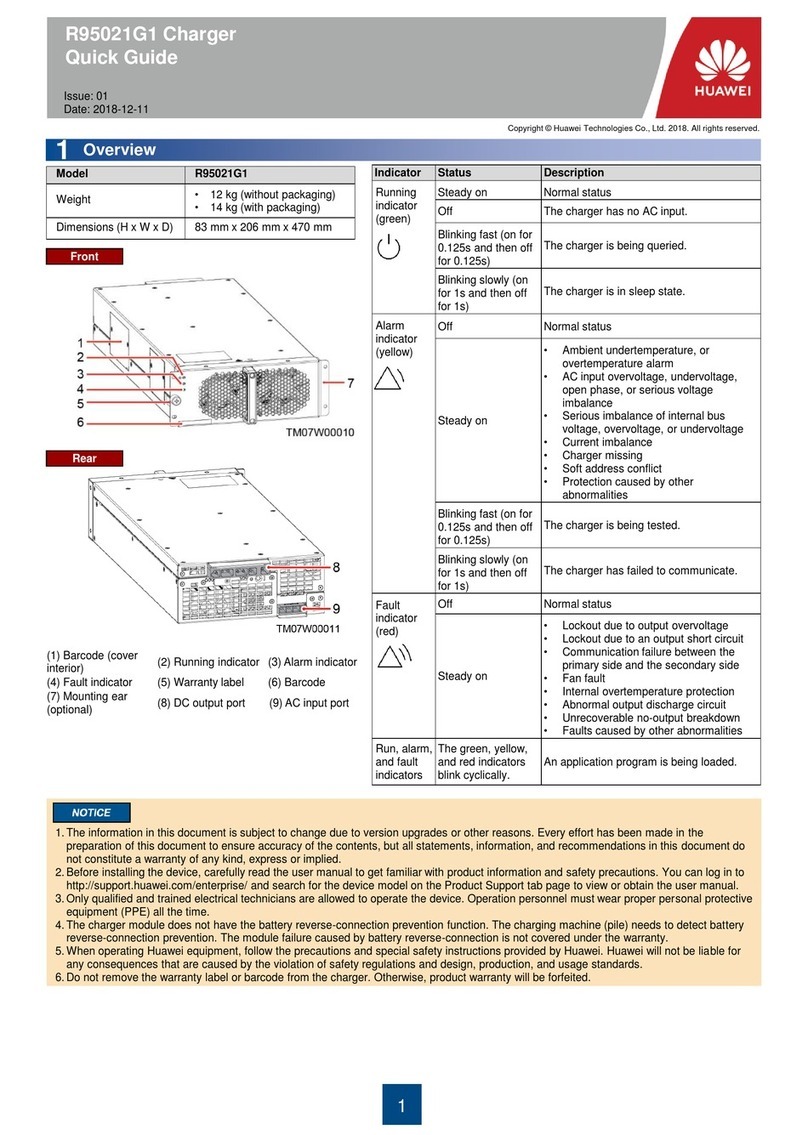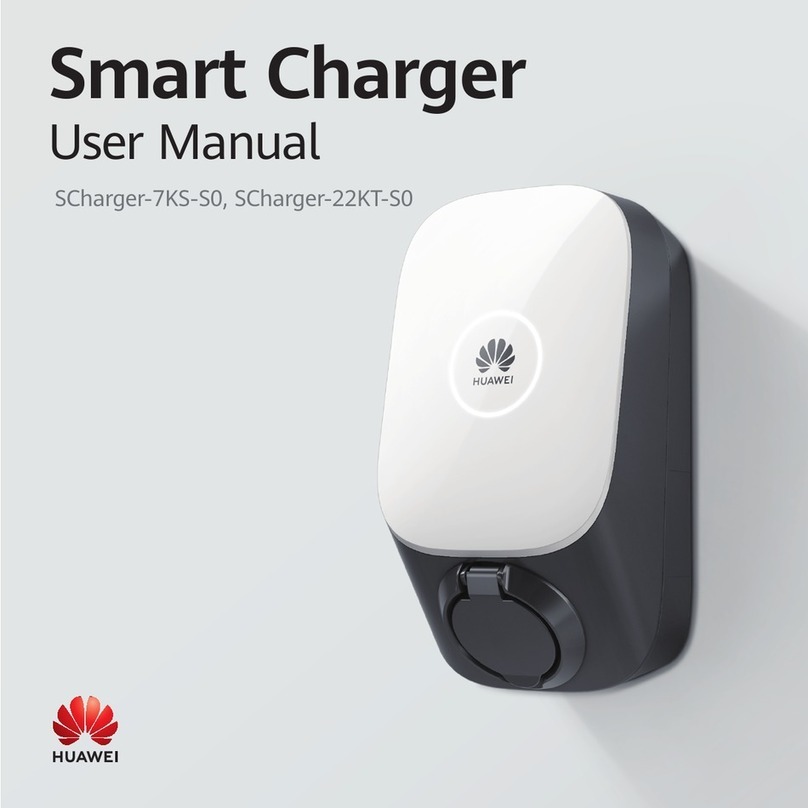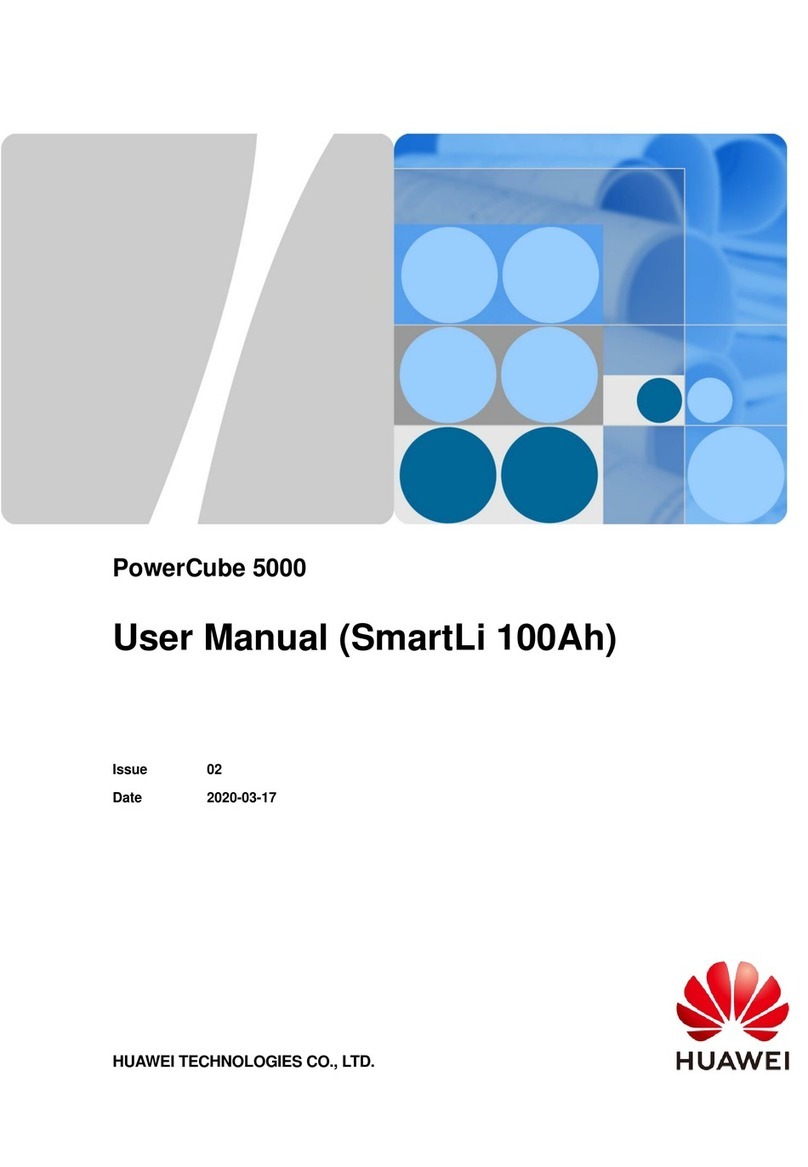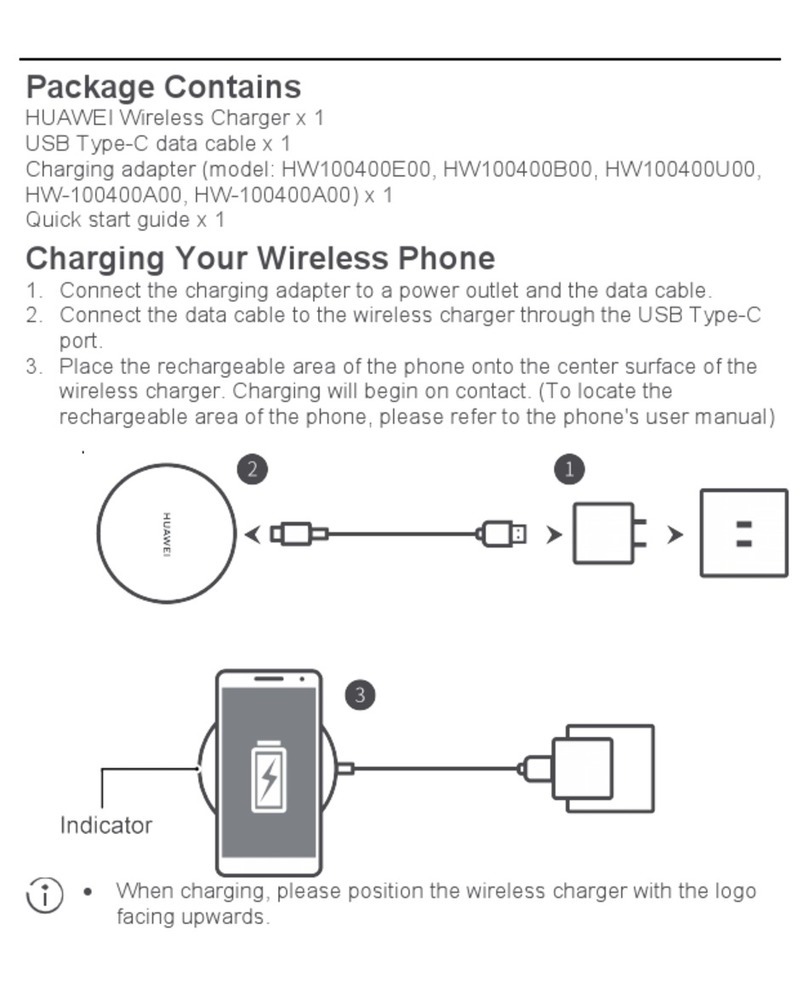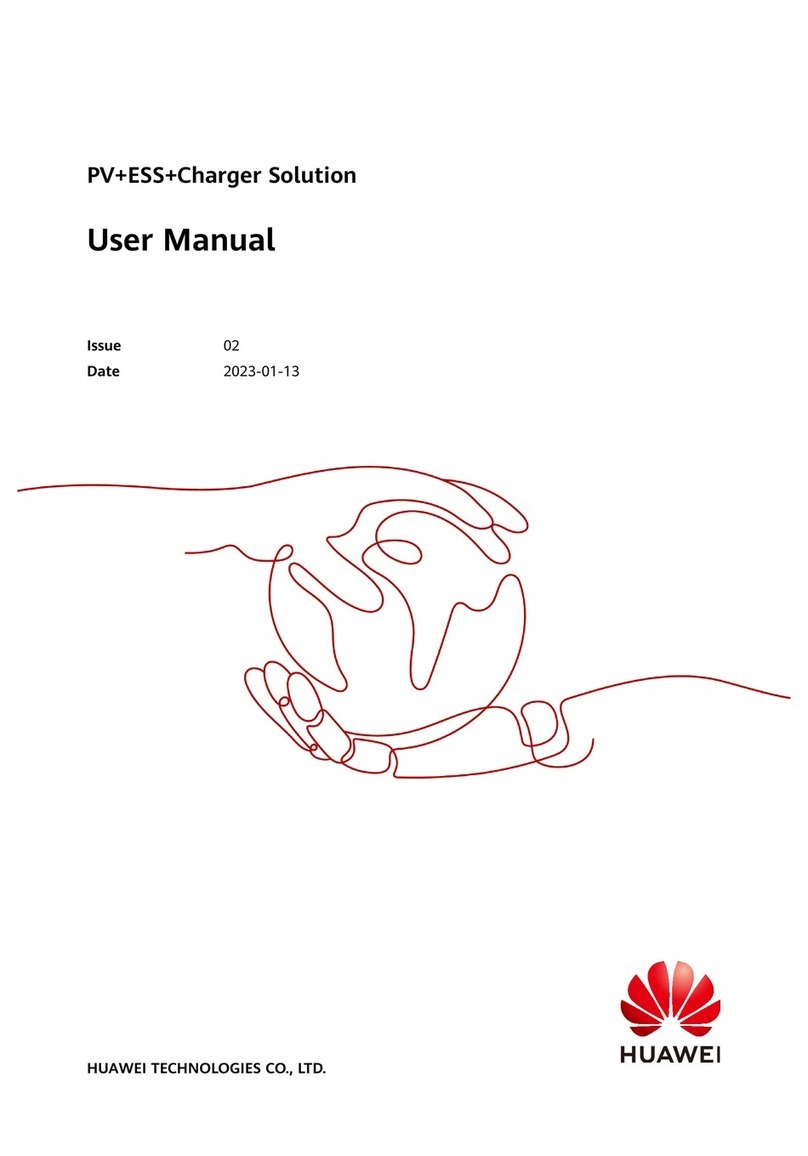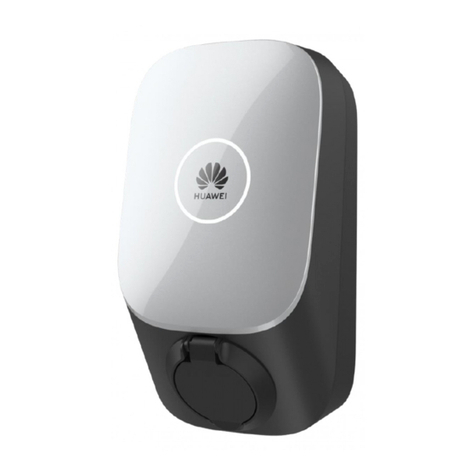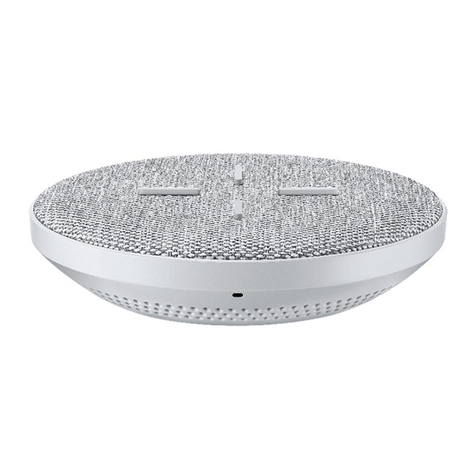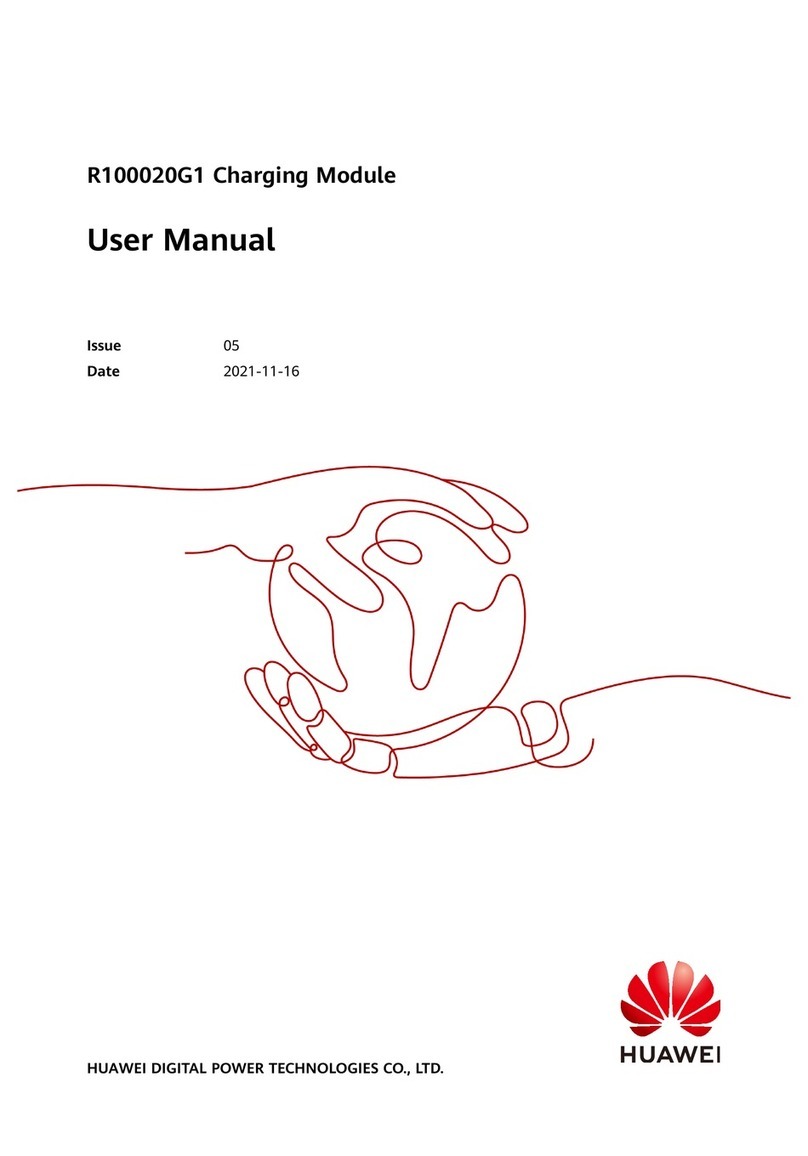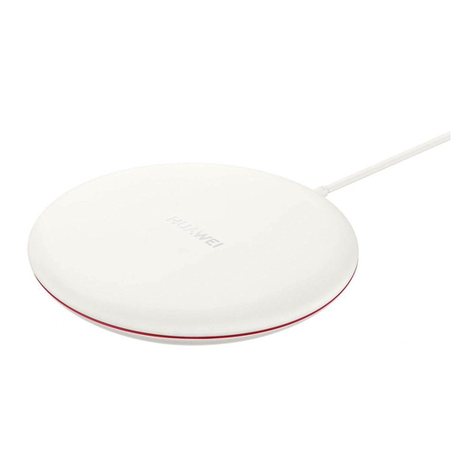
67
allowed to disassemble and install chargers.
Ensure that all installation operations are performed
shock.
Ensure that the installation surface is solid enough
to hold the charger. It is recommended that the wall
have a bearing capacity of at least 100 kg.
space around the installation position to ensure
good ventilation.
Ensure that the wall is larger than the rear cover of
the charger.
When installing the product, install the ground cable
ground cable last. Do not work on the product in the
absence of a properly installed ground cable.
Do not install or remove power cables with power on.
Before switching on the upstream RCBO, ensure that
cables are correctly connected to the charger.
After the upstream RCBO is switched on, do not
touch the terminals on the rear cover directly or with
conductors.
Use cables that comply with local regulations and
ensure that the insulation layer is intact.
When installing the product, use a screwdriver with
a proper torque to tighten the screws. When using a
screwdriver, ensure that the screwdriver does not tilt
and the torque error does not exceed 10% of the
When routing power cables, ensure that there is no
coiling or twisting.
Keep cables at least 30 mm away from
heat-generating components or heat source areas.
Installation Precautions
Before installation, carefully read the
precautions in this manual and prepare for the
installation.
Installation Preparations
The charger power is within the allowed load range of the residence.
Cables and RCBOs meet the installation and usage requirements.
If the AC input power cable exposed to the outdoor environment is 3 m or longer, consult the local installer. You are
charger must be at least 3 m.
A network cable that is long enough is prepared if the charger is connected to a wired network.
The installation area should be covered by a wireless network if the charger is connected to the network through WiFi.
Scan the QR code in "About This Manual" and see detailed information about the meter in "Meter Description."
Before the installation, ensure that:
Preparing Tools
Personal protective
equipment Safety helmet
Hardware installation
tools
Hammer drill and
Protective gloves Insulated shoes
Phillips insulated torque
screwdriver (M4/M5/M6)
Insulated security torx
torque screwdriver (TT20)
Rubber mallet
Marker
Cable installation tools Wire stripper Crimping tool Scissors
Measurement instruments Clamp meter Steel measuring tape Level instrument
Auxiliary materials Insulation tape Heat-shrink tubing Cord end terminal
Preparing an RCBO
Note: To facilitate cabling, aluminum wires and solid copper wires are not recommended.
Specifications
Input
Single-phase /
Three-phase
4P RCBO, 40 A (50 A is recommended if the ambient temperature is higher than 45°C), Type A or B,
in compliance with local regulations.
Do not join or weld power cables. If necessary, use a
longer cable.
Seal unused power cable holes with rubber plugs
after the installation is complete.
Preparing Cables
Operating Current
Cable Type
AC input power cable (single-phase three-wire) 32 A
Cross-sectional Area
6~10 mm2
6~10 mm2
Scan the QR code to get the installation video.
